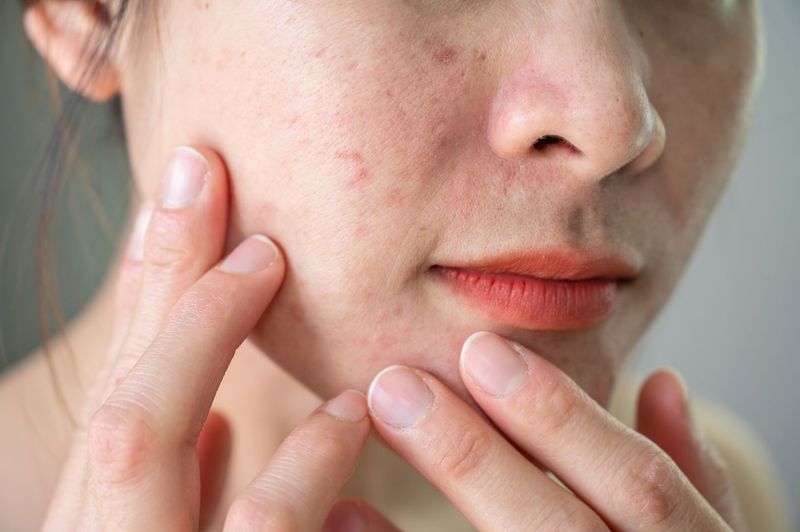13 Subtle Health Changes Every Woman Over 40 Should Watch For

Our bodies speak to us in whispers before they start to shout. As women cross the 40-year milestone, certain health changes become more common but might go unnoticed in our busy lives. Catching these subtle shifts early can make a huge difference in treatment options and outcomes. Let’s explore the key health changes that deserve your attention after 40.
1. Shifting Sleep Patterns

Many women find themselves waking up more often during the night after 40. Hormonal fluctuations that begin in perimenopause can trigger night sweats and disrupt your sleep cycle. Quality sleep becomes harder to achieve, yet it’s more important than ever for your health. Your body might need different support now – perhaps a cooler bedroom or a new bedtime routine. Don’t dismiss chronic sleep changes as just part of aging. They could signal sleep apnea, anxiety, or hormonal imbalances that deserve medical attention.
2. Unexpected Weight Distribution

Your body’s fat storage patterns may shift dramatically after 40, even if your weight stays the same. The midsection often becomes the new storage depot for fat cells, regardless of your previous body shape. This isn’t just about appearance – it’s about health. Abdominal fat surrounds vital organs and produces inflammatory substances that increase disease risk. Regular strength training becomes crucial now, not just cardio. Sudden or extreme belly fat gain might signal hormonal issues like insulin resistance or cortisol problems that warrant a doctor’s visit.
3. Vision Clarity Changes

The frustrating hunt for reading glasses begins for many women in their 40s. Presbyopia – the gradual loss of your eyes’ ability to focus on nearby objects – is an almost universal experience. Beyond the reading challenges, you might notice increased sensitivity to glare, difficulty distinguishing similar colors, or needing more light to see clearly. These changes happen gradually, making them easy to miss. Annual eye exams become essential now, not just for vision prescription updates but to catch early signs of serious conditions like glaucoma or macular degeneration that become more common after 40.
4. Bathroom Frequency Increases

Suddenly mapping out bathroom locations everywhere you go? Increased urinary frequency affects many women after 40 due to hormonal shifts and pelvic floor changes. The urge to go might feel more urgent or happen more often, especially after laughing, coughing, or exercise. These aren’t just inconveniences – they’re signs your body is changing in ways that need attention. Kegel exercises can significantly improve these symptoms by strengthening pelvic floor muscles. If bathroom trips interfere with your daily life or sleep, talk to your doctor about possible solutions like physical therapy or medication.
5. Skin Texture Transformations

The mirror might reveal new lines and dryness as estrogen levels begin to decline. Your skin’s natural oil production decreases, and collagen – which gives skin its bounce – breaks down faster than your body replaces it. Skincare that worked in your 30s might not cut it anymore. Products with hyaluronic acid and peptides become more valuable now for maintaining moisture and elasticity. Sun protection becomes even more critical as past damage starts to surface. Sudden changes in moles or new growths deserve immediate medical attention, as skin cancer risk increases with age and sun exposure history.
6. Digestive System Slowdowns

Foods that never bothered you before might suddenly cause discomfort as your digestive system changes pace. Hormonal shifts, medication side effects, and natural aging can all contribute to a slower digestive transit time. Constipation becomes more common, and some women notice increased gas, bloating, or heartburn. Your body might process certain foods differently now, requiring dietary adjustments. Staying hydrated and increasing fiber intake can help tremendously. But persistent changes, especially when accompanied by pain or weight loss, should prompt a conversation with your healthcare provider to rule out more serious conditions.
7. Memory Fog Moments

Blanking on a familiar word mid-sentence or forgetting why you walked into a room happens to everyone, but these moments often increase after 40. Hormonal fluctuations can temporarily affect verbal memory and concentration. Multitasking might become more challenging as your brain processes information differently. This doesn’t mean your intelligence is declining – just that your cognitive resources are being allocated differently. Regular mental challenges, adequate sleep, and physical exercise all help maintain brain function. Persistent or worsening memory issues, especially those affecting daily function, deserve medical evaluation to rule out treatable causes.
8. Mood Swing Intensities

Emotional reactions might feel amplified as hormonal fluctuations affect brain chemistry. Many women report feeling more irritable, anxious, or experiencing unexpected crying spells during perimenopause. These mood changes often catch women by surprise, especially those who haven’t experienced significant PMS in the past. They’re not signs of weakness but biological responses to changing hormone levels. Tracking your moods alongside your cycle (if still menstruating) can reveal patterns. Exercise, stress management, and sometimes medication can help stabilize mood. Severe mood changes that interfere with relationships or daily functioning warrant professional support.
9. Breast Density Differences

Your breasts continue changing long after puberty and pregnancy. Many women notice increased tenderness, lumpiness, or size fluctuations as hormones shift in the 40s. Breast tissue often becomes less dense with age, making mammograms more effective at detecting abnormalities. However, some women maintain high breast density, which can make cancer detection more challenging and may require additional screening methods. Monthly self-exams become even more important now as your baseline “normal” changes. Learning what your breasts normally feel like helps you quickly identify concerning changes that should be evaluated by a healthcare provider.
10. Joint Stiffness Surprises

Morning stiffness that takes longer to work out might be your first sign of age-related joint changes. Estrogen helps maintain joint lubrication and reduces inflammation, so declining levels can affect joint comfort. Activities that never caused discomfort before might suddenly leave you sore. Your body needs more warm-up time and recovery between intense physical activities. Glucosamine supplements help some women, while others benefit from omega-3 fatty acids or anti-inflammatory foods. Don’t assume joint pain is inevitable – proper movement, maintaining healthy weight, and addressing issues early can prevent progression to arthritis.
11. Migraine Pattern Alterations

Women who’ve dealt with migraines often notice significant changes in their 40s. Some find blessed relief as hormonal triggers stabilize, while others experience new or worsening headache patterns. The connection between hormones and head pain becomes more apparent during perimenopause. Tracking headaches alongside other symptoms can help identify triggers that might be different now than in your younger years. New-onset severe headaches after 40 should always be evaluated by a doctor, especially if accompanied by visual changes or other neurological symptoms. Treatment options have expanded greatly, so don’t suffer through changing headache patterns without medical support.
12. Heart Rhythm Irregularities

Heart palpitations – that fluttering or pounding in your chest – become more common after 40. These sensations often relate to hormonal fluctuations rather than heart disease, but they can be frightening. Your heart’s electrical system naturally changes with age. Most palpitations are harmless, but they serve as important reminders to prioritize heart health through diet, exercise, and stress management. Any palpitations accompanied by chest pain, dizziness, or shortness of breath warrant immediate medical attention. Heart disease risk rises significantly after menopause, making cardiac awareness increasingly important in your 40s and beyond.
13. Gum Sensitivity Increases

Bleeding gums when brushing might signal more than just needing to floss more often. Hormonal changes can affect gum tissue, making it more susceptible to inflammation and recession. Receding gums expose more sensitive parts of your teeth, leading to temperature sensitivity or discomfort with certain foods. Bone density changes can also affect jaw bone and tooth stability. Regular dental check-ups become even more crucial after 40. The mouth-body connection is powerful – gum disease has been linked to heart disease, diabetes, and other chronic conditions that become more common with age.

Comments
Loading…